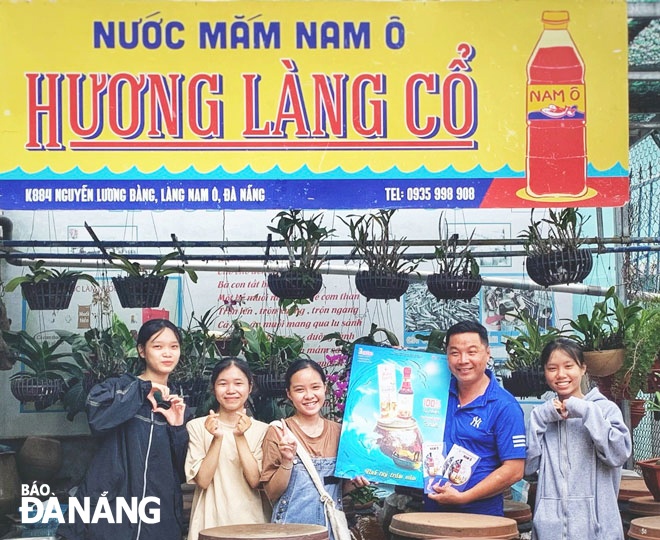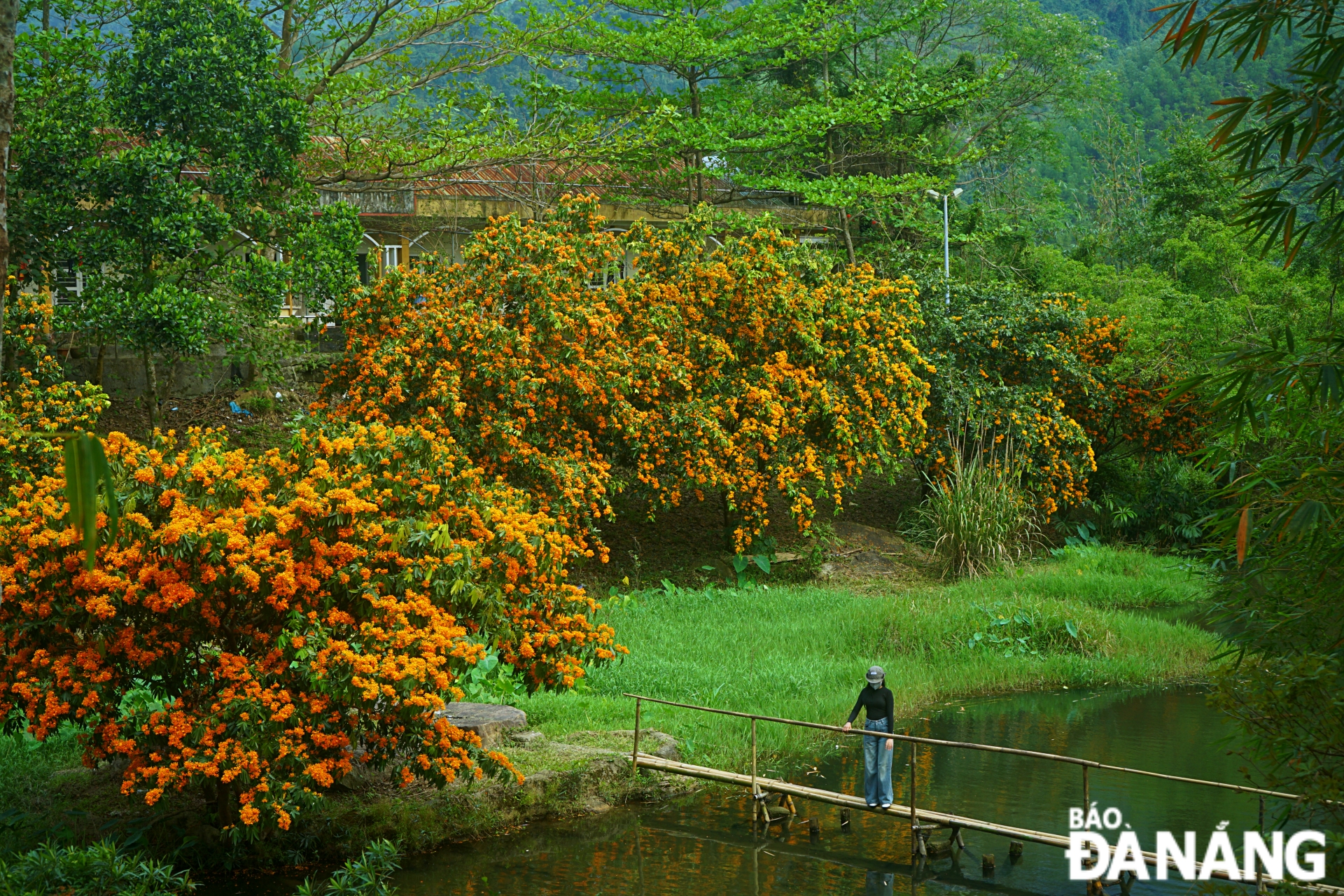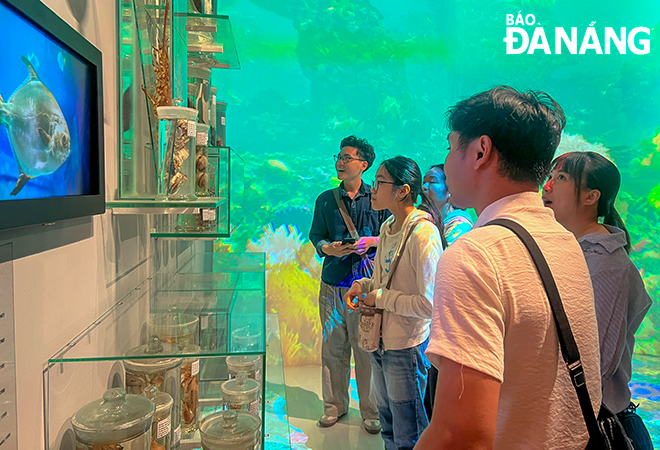Prospects for Da Namg craft village tourism
The potential is not small whilst the expectations are great. For many years, craft village tourism activities (linking the development of craft villages with tourism) in Da Nang have prospered, contributing to enriching products and increasing the cultural depth of this destination.
 |
| Nam O traditional fish sauce producers in Lien Chieu District, Da Nang are constantly making efforts to bring traditional products to the market, including tourism activities. Photo: K.H |
Highlights in tourism development
For more than a month now, at the stopover point of the Bana Rita Glamping Farm tourist area in Hoa Phu Commune, Hoa Vang District, there has been an additional highlight to attract tourists: the display of items certified as OCOP (One Commune- One Product) items, originating from famous craft villages such as Phu Tuc wine, Tuy Loan rice paper and Non Nuoc stone carving.
Mr. Le Thanh Tuan, the owner of the tourist area said, “The Bana Rita Glamping Farm was formed on the former land. This is an area where farmers specialize in agricultural cultivation, so we take the goal of exploiting tourism services combined with agricultural development as a guideline for development. Within the farm's 50,000 square meter campus, along with being certified as the city's first 4-star OCOP tourist farm, we have developed a project to form an area for the display of products from the city’s famous traditional craft villages”.
Implementing the tourism development model associated with agriculture as mentioned above is expected to contribute to speeding up agricultural development. When tourists visit, they can buy agricultural products, thus creating more output for production activities in craft villages. In the opposite direction, income from tourism activities will support agricultural reproduction.
At the An Phu Farm, Mr. Duong Hien Tu, farm director, shared that the farm currently has 8,000 square meters of land for growing vegetables, fruits of all kinds and raising poultry. Tourists visiting and relaxing at An Phu Farm will not only be able to immerse themselves in the natural scenery, experience the feeling of farming, but also be ready to buy clean agricultural products. This is also the general trend in current tourism activities.
Developing craft villages associated with tourism activities is a necessary direction to ensure the maintenance, preservation and promotion of traditional craft villages.
Craft village tourism has now become an important piece of the puzzle, a type of integrated cultural tourism that allows tourists to visit, feel cultural values and buy typical goods, adding extra experience when integrating tourism activities with traditional local culture. Up to now, many travel businesses such as Vitour, Viet Da and Omega Tour have tour programmes and routes that include traditional craft village destinations.
Part of the long-term development plan
Now, many people and tourists know the salty, rich flavour of the Nam O fish sauce that has been carefully distilled for months. The story of the Nam O traditional fish sauce village has entered the history books, receiving strong press and media attention in recent times, along with the efforts of authorities at all levels and the desire of the Nam O villagers to restore the craft village.
He successfully revived this craft village from the risk of extinction. The city’s administration also issued the project ‘Preserving Nam O fish sauce craft village associated with Da Nang tourism development’. Now, the Nam O fish sauce village has put its name on the map of traditional craft villages.
The reputation of the whole country needs to be preserved and promoted. Many locations produce the Nam O fish sauce in Lien Chieu District such as Huong Lang Co, Binh Minh, O Long, Tran Ngoc Vinh, Ba Cu, Ba Hoa, Ba Sieng, Ba Lu, Bay Tri, Hai Hiep, Hai Lien, Bay Ngung and Hong Huong become places to experience and shop for many routes. Mr. Bui Thanh Phu, the owner of the Huong Lang Co fish sauce brand in Lien Chieu District, expressed his desire to have a common product display area for members.
This is also a place to vividly recreate the distillation process that creates these Nam O fish sauce products, helping visitors partly visualize the life of coastal people as well as the hundreds of years of history during which their ancestors built the craft village.
Most recently, the city’s authorities received good news that the traditional more than 500-year-old Tuy Loan rice paper making profession has been recognized in the National Intangible Cultural Heritage List by the Vietnamese Ministry of Culture, Sports and Tourism.
For Tuy Loan rice paper villagers, rice paper has a very important meaning in both spiritual and material life, because it is not only a means of livelihood but also has an extremely special cultural significance. This is an indispensable dish on death anniversaries, ancestral offerings or Tet holidays, becoming a traditional custom passed down from generation to generation and showing respect and cherishing tradition.
In particular, every year during the festival season of Tuy Loan village communal house, rice paper making households are willing to introduce locals and tourists to the traditional steps of making rice paper.
Mr. Tran Ngoc Vinh, the Chairman of the Nam O Traditional Fish Sauce Craft Village Association said that preserving the traditional fish sauce production profession and linking it with tourism development is a long-term effort exerted by the people, functional sectors and households participating in production.
Reality shows that it is necessary to improve urban infrastructure and knowledge for the community so that they can understand more about this time-honour craft and thereby preserve its values.
Another important issue is that when connecting successfully between craft village development and tourism, we must focus on training the successor team to upgrade products and develop sustainable livelihoods for villagers.
There is still a lot of work that needs to be done to turn craft villages into a popular tourism product, but we believe that with the right directions as well as the synchronous participation of relevant agencies to make decisions and appropriate plans in a bid promote the inherent potential of craft villages in the city.
Reporting by KHANH HOA - Translating by A.THU








